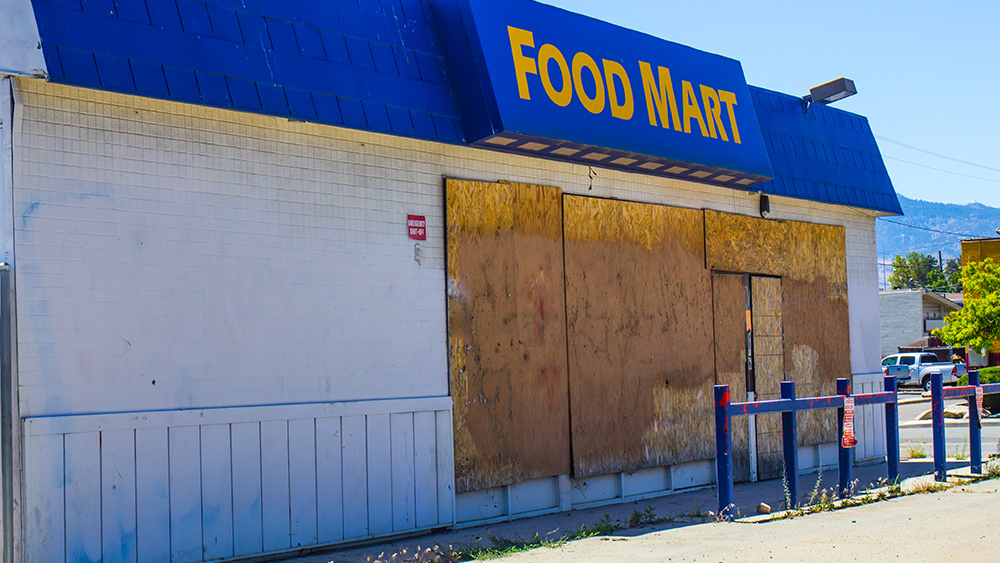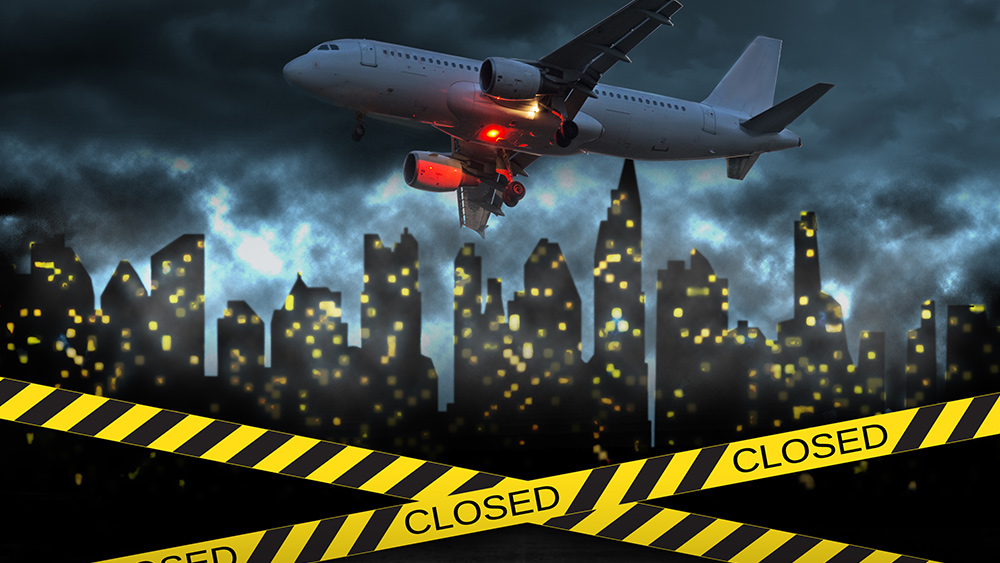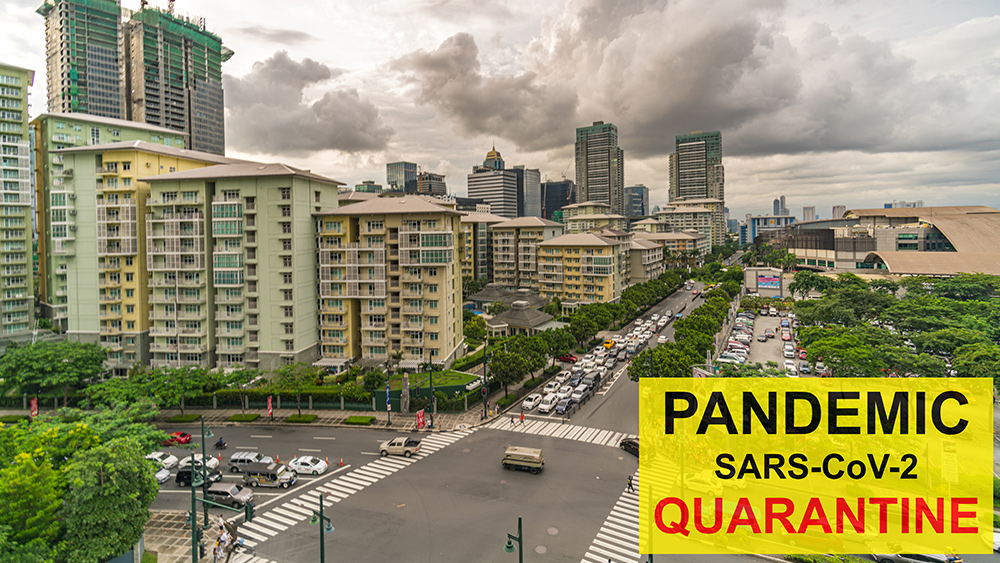10 Things to consider while prepping a long-distance bug-out plan
04/03/2020 / By Zoey Sky

Before bugging out, you need a detailed plan that covers the basics, such as your route, where and how to get fuel during the journey, and self-defense. A good prepper won’t make the decision to bug out on a whim – you must first ensure that your bug-out vehicle has been prepped into a fortified “home on wheels” that’s ready to go when SHTF. (h/t to Survivopedia.com)
Some preppers may have bugging out as their only choice if they want to survive a disaster scenario. But after you’ve successfully evacuated your home, there are other things to consider as you bug out, such as how you can safely reach your bug-out location.
To avoid mistakes that can cost your life, sit back and consider these 10 factors while finalizing your long-distance bug-out plan. (Related: 5 Must-haves for your bug-out vehicle.)
Plan a detailed route to your bug-out location and find alternative routes
When drafting your emergency preparedness for a long-distance bug out, plan a detailed route. Identify possible choke points and all population centers prone to civil unrest.
Once you locate dangerous travel points along your path, find alternative routes. Anticipate that the alternative routes may pass through rough terrain like rough roads, waterways and mountains.
Avoid roadblocks
Consider barricades or roadblocks as a warning sign. Don’t approach a roadblock unless you have no other choice.
It could be a roadblock set up by a government agency, but it may also be a trap set by locals who try to take your supplies by force. Are you willing to take this risk when SHTF?
Be wary of roadblocks, especially if they expose your vehicle to direct fire from multiple angles. When in doubt, try to find another route.
Set observation points
Communication is crucial to your bug-out plan.
Plan multiple methods and means of communication. If communication is no longer possible, set up at least one observation point before each stopping zone, like a meeting point or your final destination.
An observation point lets you monitor and analyze the situation without being spotted by attackers. Plan your next action based on the new information you gathered from your observation post.
Familiarize yourself with the area
Choose routes that you’re familiar with and look for signs of trouble using a pair of binoculars once you arrive at set observation points.
Listen to the radio and monitor the news in the area you’re traveling in. Choose an alternative route if reports indicate that trouble is brewing near one of your intended routes.
Determine your fuel needs
When running out of gas, a solo prepper bugging out can resort to using his bicycle. However, this isn’t always possible for large groups.
Gas is essential for long-distance bugging out. You need extra gas, particularly if you have to take unexpected detours that can use up precious fuel.
If you’re forced to take detours, you will eventually need to gas up, or even borrow, beg or steal fuel so you can continue your journey. Keep a simple siphon and pump to refuel your car.
Concealment, weapons and self-defense
During a long-distance bug-out, protection and self-defense are two major points to consider.
Conceal your firearms, and bring the necessary permits to avoid trouble from the authorities.
Avoid conflict whenever possible
When SHTF, the last thing you need is to bring attention to yourself. On long journeys through unknown territory and in the company of unpredictable elements of society, conflict avoidance becomes a priority.
Remain calm and focus on reaching your destination safely. In a survival scenario, avoid all contact with people when possible. When you do have to interact with other folks, keep it simple and be polite.
Try to avoid conflicts instead of causing them.
Don’t risk your life for gear or supplies
When disaster strikes, you may be forced to give up your items because of looters. Never risk your life and the lives of your family for supplies.
If you have to abandon your vehicle, prep for your journey on foot by properly distributing the weight of your pack. Make sure you can comfortably carry your gear if you still have a long way to go.
Learn about caching
Caching is a survival technique that can be used even today, particularly if you have to travel far to reach your bug-out location.
Simply put, a cache is a container for supplies that you can access when SHTF. If the environment allows, you can bury your cache. Alternatively, you can conceal your cache using clever hiding places.
Since you’re bugging out, you may need to set up several caches along your route. When your supplies run out or you are forced to evacuate your vehicle, you can head to one of your nearest caches to stock up.
Not sure where to store your cache? Use containers like a PVC tube for smaller items, a waterproof box or storage bins. Store your cache in a secure hiding spot.
Keep a low profile when traveling
Don’t call attention to yourself during a long-distance bug-out. Before SHTF, learn how to conceal your presence and how to avoid leaving traces behind in case someone tries to follow you.
Keeping a low profile also requires you to learn about tracking and evasion techniques. Get some practice in and do your research on how to conceal your presence and have a low-impact camping site.
When prepping your long-distance bug-out plan, consider all the possible options you have and the challenges the journey may bring, such as fuel shortages or lost gear, and plan how you’re going to address them.
Stay safe and prep wisely.
Sources include:
Tagged Under: bug out, bug out vehicle, emergency preparedness, evacuation, off grid, preparedness, prepping, road safety, SHTF, survival, traveling
RECENT NEWS & ARTICLES
COPYRIGHT © 2017 CHAOS NEWS



















